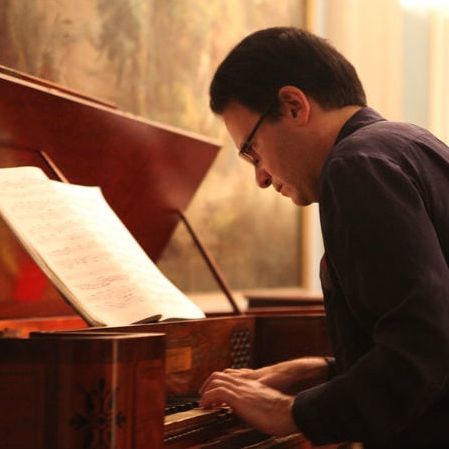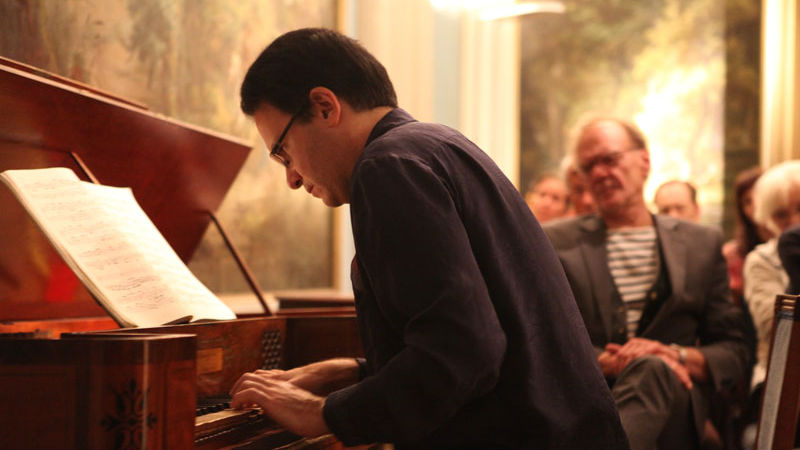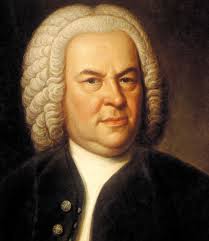Exploring J. S. Bach’s Art of the Fugue: Michael Tsalka – Fortepiano’s
25 oktober 2014 | 20.15 uur
| Posthoornkerk,
Onderdeel van het Geelvinck Fortepiano Festival

The ‘Art of the Fugue’ stands as counterpart to Bach’s earlier ‘Well Tempered Clavier’, whose double cycle of preludes and fugues in each of twelve Major, and minor, keys represents tonal miniatures wherein the primary relationships are procedural, not thematic. By contrast, each fugue of Die Kunst shares not only the same key, but also subject. The cleverness with which this subject is varied, then fugally revealed, represents a crowning achievement of Western art.
By Prof. Tim Smith
JOHANN SEBASTIAN BACH’S THE ART OF THE FUGUE, BWV 1080
(Uncompleted at the time of the composer´s death. Published by his son C. P. E. Bach in 1751)
Michael Tsalka, Harpsichord, Square Piano and Fortepiano
PROGRAM
(Based on the formal and sequential reconstruction by Reinhard Goebel)
Group I (Simple Four-Voice Fugues)
Contrapunctus 1 (Fugue on principal subject)
Contrapunctus 2 (Fugue on principal subject accompanied by French-style dotted rhythms)
Contrapunctus 3 (Fugue on principal subject in inversion, very chromatic)
Contrapunctus 4 (Fugue on principal subject in inversion, employs counter-subjects)
CANON ALLA OTTAVA (following voice in imitation of the subject begins an octave below)
Group II (Counter-Fugues)
Contrapunctus 5 (with many stretto or “piled-up” entries of the subject)
Contrapunctus 6 (per Diminutionem, in Stylo Francese. Halving note-length of the subject)
Contrapunctus 7 (per Augmentationem et Diminutionem. Doubling and halving note-length of
subject and its inversion.)
CANON ALLA DECIMA (following voice in imitation of the subject begins an octave and a third
above)
Group III (Double and Triple Fugues)
Contrapunctus 8 (a 3. Triple fugue, with three subjects, having independent expositions)
Contrapunctus 9 (a 4, alla Duodecima. Double fugue, with two subjects occurring dependently and
in invertible counterpoint at the 12th interval)
PAUSE
Contrapunctus 10 (a 4, alla Decima. Double fugue, with two subjects occurring dependently and
in invertible counterpoint at the 10th interval)
Contrapunctus 11 (a 4. Triple fugue, employing the three subjects of Contrapunctus 8 in inversion)
CANON ALLA DUODECIMA (following voice in imitation of the subject begins an octave and a fifth
above)
Group IV (“Straight” and “Mirror” Versions of entire Fugues)
Contrapunctus 12 (a 3, Rectus)
Contrapunctus 12 (a 3, Inversus)
Contrapunctus 13 (a 4, Rectus)
Contrapunctus 13 (a 4, Inversus)
CANON IN HYPODIATESSARON (per Augmentationem in Contrario Motu. Following voice, inverted
and augmented, in imitation of the subject begins a fourth below)
Contrapunctus 14: QUADRUPLE FUGUE (Not completed by J. S. Bach, but very probably intended by the composer to become a quadruple fugue with four separate expositions. The brilliant completion we will hear tonight was reconstructed and published by Hungarian composer Zoltan Göncz in 2006.
Several historical keyboards performed by Michael Tsalka
In collaboration with the Israeli Embassy and KUNSTENISRAEL
More about die Kunst der Fuge
Der Kunst der Fuge, BWV 1080 is the last and most monumental of J. S. Bach’s great monothematic cycles, the other three being Das Musikalische Opfer, the Goldberg Variations, and the Canonic Variations on Vom Himmel hoch. By any measure, the Der Kunst der Fuge is a formidable work, with eighteen sections of intense counterpoint, which take around eighty minutes to perform. The entire work is miraculously derived from a single musical phrase or subject, the first four measures or first twelve notes of Contrapunctus I. Underpinning the intellectual and formal rigor of this famous work, there is incredible emotional sweep and musical imagination. Dutch/Israeli virtuoso extraordinaire, Michael Tsalka will offer a moving and powerful performance of this masterpiece of Western art on three different historical keyboards on Saturday, October 25 at 20:15 hrs. at the Posthoornkerk in Amsterdam. This will be the closing recital of the Geelvinck Fortepiano Festival.




